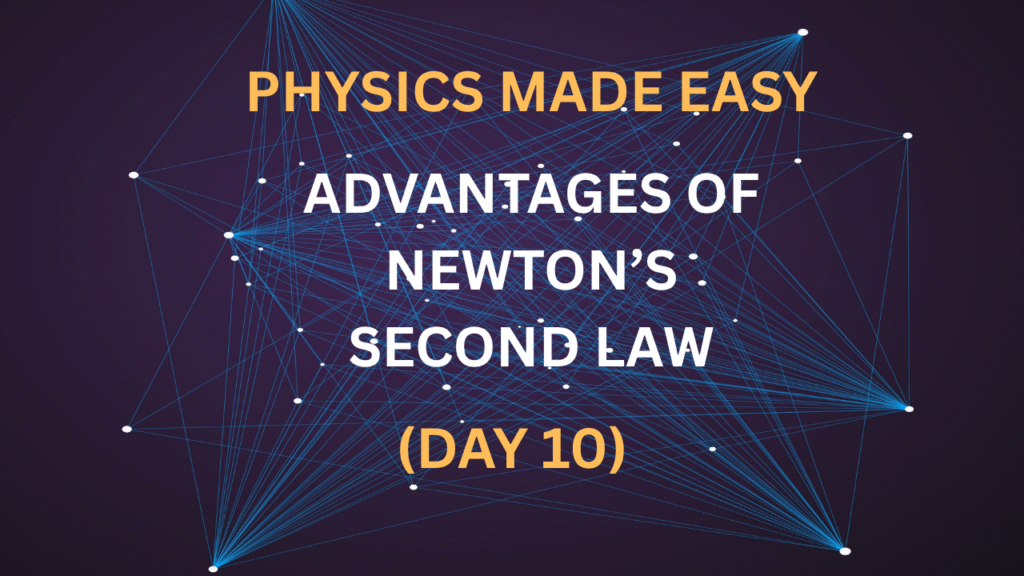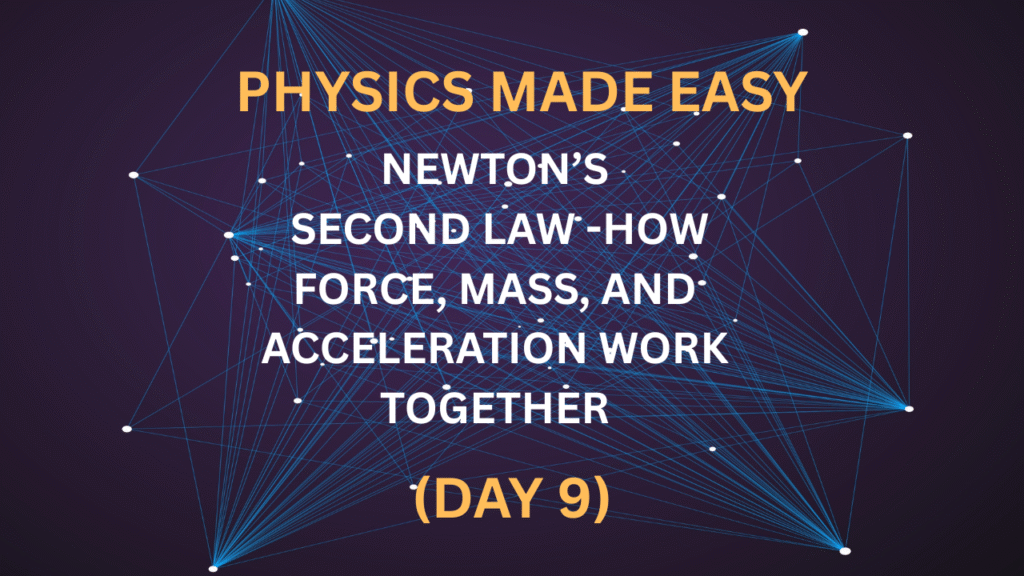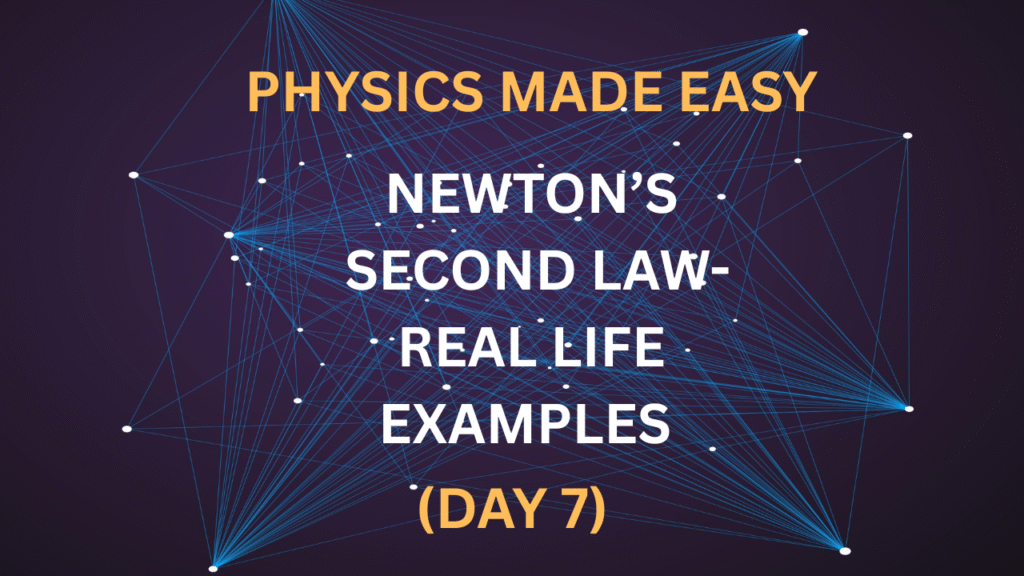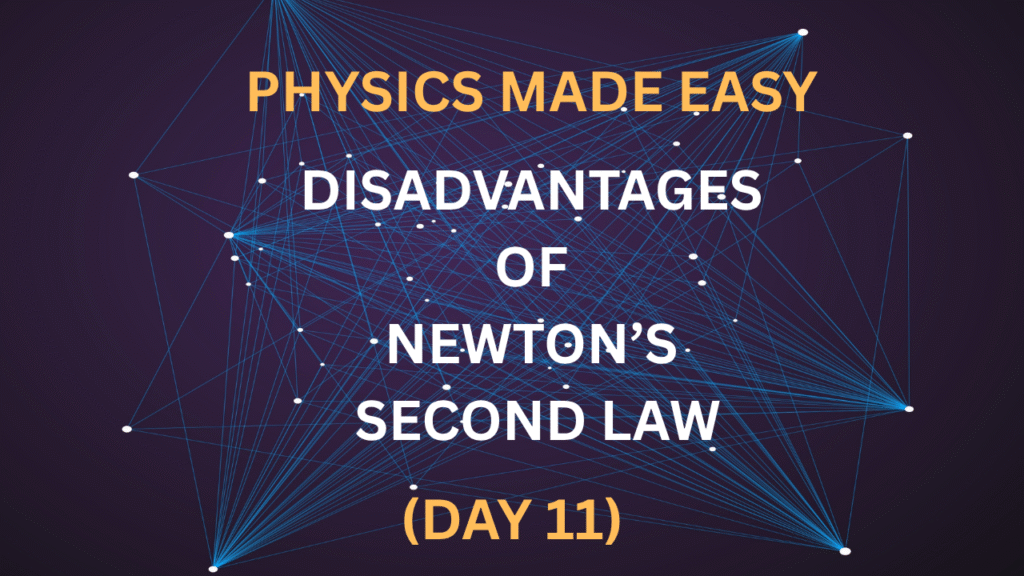Introduction
Have you ever wondered why it’s easier to push an empty shopping cart than one loaded with groceries? Or why you can kick a football farther with a strong kick? The answer lies in Newton’s Second Law of Motion, one of the most fundamental concepts in physics. In this article, we’ll explore the law, its practical examples, real-world connections, and what it really tells us about how the world around us moves.
Focus keyword: Newton’s Second Law of Motion
What is Newton’s Second Law of Motion?
Newton’s Second Law of Motion explains how an object’s acceleration depends on its mass and the force applied to it. Simply put:
The harder you push something, the faster it accelerates. The heavier an object, the more force you need to move it.
That’s why it’s easier to push a light bicycle up a hill than a heavy motorcycle. This law is at the heart of mechanics, engineering, and even sports!
The Famous Formula: F = m × a
Newton summarized this law with one of the most famous formulas in physics:
F = m × a
where
• F = Force (newtons)
• m = Mass (kilograms)
• a = Acceleration (m/s²)
This tells us that:
✅ Force is directly proportional to both mass and acceleration.
✅ Increase the mass? You’ll need more force.
✅ Increase the force? The object will accelerate faster.
🔗 For a deeper dive into the math, check out this detailed Physics Classroom article on Newton’s Laws.
Easy Examples to Understand
🛒 Pushing a Shopping Cart
Imagine pushing two shopping carts:
- An empty cart moves easily because its mass is small.
- A full cart requires much more force because its mass is larger.
⚽ Kicking a Football
If you want to send the ball flying:
- A strong kick applies greater force, creating more acceleration.
- A light tap means less force and minimal acceleration.
🚴♀️ Riding a Bicycle
When cycling:
- Pedaling harder → more force → more acceleration → higher speed.
- Carrying a heavy backpack → increased mass → need more force to achieve the same acceleration.
Real-World Connections and Applications
Newton’s Second Law is all around us. Every movement and design process relies on this law to ensure safety, efficiency, and performance.
✅ Automotive Engineering:
Designing engines and braking systems depends on understanding force, mass, and acceleration. Electric car companies like Tesla carefully calculate these to optimize speed and safety.
✅ Rocket Science:
When rockets launch, they burn fuel to produce huge amounts of force that must overcome their mass. NASA and SpaceX use this law to plan every part of their missions.
✅ Sports Training:
Athletes train to exert greater force to run faster, jump higher, or hit balls with more power. This is why strength training is a core part of sports.
✅ Industrial Machines:
Machines in factories move heavy parts using calculated forces, allowing automation to work reliably and efficiently.
Why Does This Matter to Us?
Newton’s Second Law of Motion simplifies the way we understand motion. It’s the key to:
- Creating faster cars and airplanes.
- Improving athletic performance.
- Reducing injuries by understanding safety forces.
- Designing everyday tools — from cranes to bicycles.
If you look closely, almost every movement around you is governed by Newton’s Second Law!
📊 Quick Recap Table
| Key Element | Meaning |
|---|---|
| Force (F) | Push or pull measured in newtons |
| Mass (m) | Quantity of matter in kg |
| Acceleration | Change in speed measured in m/s² |
| Formula | F = m × a |
Summary
Newton’s Second Law of Motion is far more than an equation — it’s the secret to understanding why and how things move. From pushing a shopping cart to launching rockets into space, it shapes our world. Remember:
- Greater force = greater acceleration.
- Greater mass = more force needed.
By grasping this law, you’ll see physics at work in everyday life.
✅ Physics Made Easy: Advantages of Newton’s Second Law (Day 10)
🌟 Why…
⚙️ Physics Made Easy: How Force, Mass, and Acceleration Work Together (Day 9)
🔄 The…
Physics Made Easy: Real-Life Examples of Newton’s Second Law (Day 7)
🧪 Quick…
Physics Made Easy: Disadvantages of Newton’s Second Law (Day 11)
🤔 Are…
Physics Made Easy: Newton’s Second Law (Day 6)
Introduction Have…
Physics Made Easy: Disadvantages of Newton’s First Law (Day 5)
What Are…








